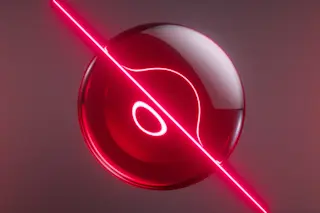In life, most people try to avoid entanglement, be it with unsavory characters or alarmingly large balls of twine. In the quantum world, entanglement is a necessary step for the super-fast quantum computers of the future. According to a study published by Nature today, physicists have successfully entangled 10 billion quantum bits, otherwise known qubits. But the most significant part of the research is where the entanglement happened--in silicon--because, given that most of modern-day computing is forged in the smithy of silicon technology, this means that researchers may have an easier time incorporating quantum computers into our current gadgets. Quantum entanglement occurs when the quantum state of one particle is linked to the quantum state of another particle, so that you can't measure one particle without also influencing the other. With this particular study, led by John Morton at the University of Oxford, UK, the researchers aligned the spins of ...
A Step Towards Quantum Computing: Entangling 10 Billion Particles
Discover the breakthrough in quantum entanglement with 10 billion entangled pairs in silicon, paving the way for future quantum computers.
More on Discover
Stay Curious
SubscribeTo The Magazine
Save up to 40% off the cover price when you subscribe to Discover magazine.
Subscribe












